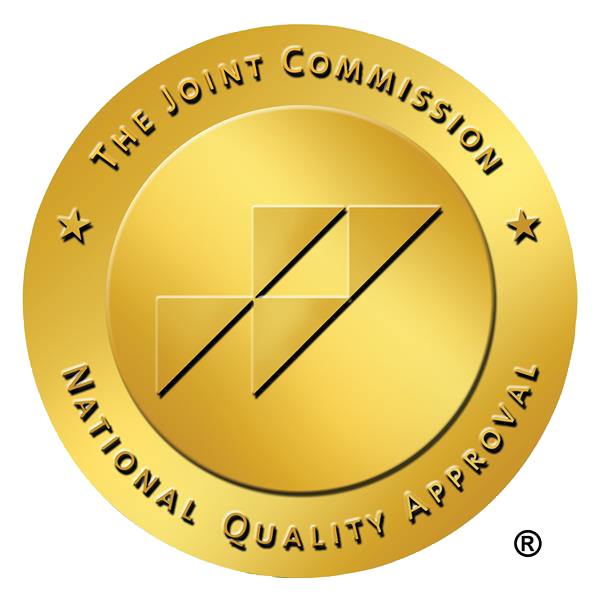Key Takeaways
- Borderline Personality Disorder (BPD) is marked by emotional instability, impulsive behavior, and unstable relationships, requiring early recognition for effective intervention.
- Psychotherapy, particularly Dialectical Behavior Therapy (DBT) and Cognitive Behavioral Therapy (CBT), serves as the primary treatment for BPD, focusing on emotional regulation and coping strategies.
- Support systems and family involvement play a crucial role in the management, fostering understanding, and aiding in Bipolar treatment adherence for individuals facing this disorder.
Understanding Borderline Personality Disorder
Borderline Personality Disorder is a multifaceted condition marked by difficulties in regulating emotions, resulting in mood swings, unstable relationships, and impulsive actions. Individuals with BPD often experience chronic feelings of emptiness, intense episodes of anger, and a distorted self-image. These symptoms can lead to significant emotional turmoil and instability in their daily lives, often associated with personality disorders.
The emotional instability associated with BPD can make everyday situations overwhelming. For instance, a minor disagreement with a friend can escalate into a full-blown crisis, leading to impulsive behaviors such as reckless driving or self-harm. The intensity of emotions can also cause extreme views of others, fluctuating between idealization and devaluation.
Early recognition of BPD symptoms aids in seeking appropriate treatment and initiating interventions to improve the quality of life for those affected. BPD is not just a struggle for the individual but also for their loved ones who often face challenges in understanding and supporting them.
Diagnosing Borderline Personality Disorder
Diagnosing Borderline Personality Disorder involves a comprehensive evaluation that includes detailed interviews and medical exams. The diagnosis typically focuses on identifying symptoms that have been present since adolescence or early adulthood. However, the process can be challenging due to the overlap of BPD symptoms with other mental health conditions like anxiety disorders and mood disorders, especially when borderline personality disorder diagnosed is considered.
Patients often present to emergency departments with suicidal behaviors or self-harm, which may indicate a potential BPD diagnosis. Long-standing difficulties across multiple areas of life are also crucial indicators. Structured interviews specifically designed for diagnosing BPD are used, although they require specialized training to administer.
Despite its prevalence, BPD is frequently missed in both psychiatric and general practice settings. This underscores the importance of thorough assessments by trained mental health professionals. Early and accurate diagnosis enables effective treatment and management, helping individuals navigate their emotional challenges and achieve more stability in their lives.
Psychotherapy as Primary Treatment
Psychotherapy is the cornerstone of treatment for Borderline Personality Disorder. Evidence-based treatment methods such as Dialectical Behavior Therapy (DBT) and Cognitive Behavioral Therapy (CBT) are particularly emphasized for individuals with BPD. The primary goal of psychotherapy is to help individuals gain control over their thoughts and feelings, leading to improved emotional regulation and interpersonal relationships. Borderline personality disorder treated effectively can lead to significant improvements in quality of life.
Treatment from a licensed mental health professional offers benefits such as developing coping skills, altering harmful behaviors, reducing impulsiveness, and enhancing overall quality of life for those dealing with a mental health condition or mental illness.
Group therapy sessions also provide a platform for individuals to interact with others facing similar challenges, fostering a sense of community and mutual support.
Dialectical Behavior Therapy (DBT)
Dialectical Behavior Therapy (DBT) is specifically designed to help individuals with Borderline Personality Disorder manage their intense emotions and self-destructive behaviors. The primary goal of DBT is to break negative emotional cycles and promote positive behavioral changes. This therapeutic approach combines individual therapy with group skills training sessions, focusing on mindfulness, emotion regulation, distress tolerance, and interpersonal effectiveness.
DBT effectively reduces self-destructive behaviors and suicidal tendencies. It teaches individuals to control intense emotions and develop healthier coping mechanisms, aiding in building stable and fulfilling relationships. The integration of both individual and group therapy components ensures comprehensive support and skill development for those with BPD.
Cognitive Behavioral Therapy (CBT)
Cognitive Behavioral Therapy (CBT) is another evidence-based treatment for BPD that helps individuals identify and change destructive thought patterns and behaviors. CBT focuses on the interplay between thoughts, feelings, and behaviors, aiming to improve emotional well-being. Key techniques in CBT include cognitive restructuring, behavioral activation, and exposure therapy, which are used to modify negative thought patterns and decrease emotional distress.
Research shows CBT reduces BPD symptoms like impulsivity and emotional instability by enhancing coping strategies and self-awareness. Outcomes include improved interpersonal relationships and increased emotional regulation, leading to better daily functioning.
Combining CBT with other therapeutic approaches, such as DBT, often yields the best results for individuals with BPD.
Schema-Focused Therapy
Schema-Focused Therapy targets entrenched patterns and beliefs that contribute significantly to the symptoms of BPD. This therapeutic approach aims to modify deeply held schemas, which are core beliefs and patterns developed in early life that can perpetuate maladaptive behaviors and emotional distress.
Addressing these underlying schemas helps individuals develop healthier ways of thinking and behaving through Schema-Focused Therapy.
Medication Management
While there are no FDA-approved medications specifically for Borderline Personality Disorder, certain drugs can help alleviate its symptoms. The primary role of medications in treating BPD is to manage co-occurring conditions such as anxiety and depression, which can reduce some BPD-related symptoms. Common medications include mood stabilizers, antipsychotics, and antidepressants.
Research indicates that these medications can help decrease the risk of self-harm and suicide in individuals with BPD. They can also improve daily functioning and relationships by managing symptoms. However, some medications, like benzodiazepines, can be problematic as they may worsen impulsivity and suicidality in BPD patients.
Ongoing research is exploring new medication types for BPD, including anti-dementia drugs and omega-3 fatty acid supplements. Working with a licensed mental health professional to develop an appropriate treatment plan, including medication management, is crucial, especially during crises.
Crisis Intervention and Hospitalization
Individuals with Borderline Personality Disorder often experience crises characterized by self-harm and impulsive aggression. Crisis management should prioritize maintaining the individual’s autonomy while ensuring their safety. Supportive and empathetic communication is crucial when managing a crisis for someone with BPD.
Hospitalization may be necessary when there is a risk of self-harm or suicidal thoughts. Severe or dangerous symptoms may indicate the need for inpatient treatment to achieve stabilization and create a treatment plan.
Facilities like Atlantic Behavioral Health provide therapy and mental health services to help individuals through such crises.
Support Systems and Family Involvement
Emotional support helps individuals with BPD feel understood and less isolated. A reliable support system offers immediate assistance during crises and motivates adherence to treatment plans. Developing a network with trusted friends or support groups provides essential emotional support.
Educating family and friends about BPD can foster empathy and reduce stigma. Involving mental health professionals in the support network enhances the quality of assistance provided.
Family members providing practical help, such as managing appointments, can ease daily challenges faced by individuals with BPD.
Self-Care and Coping Strategies
Practicing mindfulness can help individuals with BPD stay grounded and manage their emotions more effectively. Engaging in physical activity and creative outlets, such as art or writing, can facilitate emotional expression and improve mood. Establishing a daily routine provides structure, which is helpful in managing symptoms of BPD.
Self-compassion helps deal with the harsh self-criticism often experienced by those with BPD. Incorporating lifestyle changes and self-help strategies enhances treatment plan effectiveness, reduces self-destructive behaviors, and improves overall emotional well-being.
Long-Term Recovery and Maintenance
A well-structured treatment plan is vital for long-term recovery, providing clear objectives and tailored interventions. Monitoring progress through the treatment plan allows for necessary adjustments during the recovery journey. Continuous professional support is vital for maintaining recovery in individuals with BPD.
In addition to professional support, involving family therapy and addressing co-occurring conditions like substance abuse can enhance long-term recovery outcomes. The journey towards recovery is ongoing, and having a solid support system and structured plan can make a significant difference.
Understanding and effectively treating Borderline Personality Disorder requires a comprehensive approach that includes psychotherapy, medication management, crisis intervention, and strong support systems. By recognizing the symptoms early and seeking appropriate treatment, individuals with BPD can lead more stable and fulfilling lives. Remember, recovery is a journey, and with the right support and strategies, it is entirely achievable.
Frequently Asked Questions
What is the primary treatment for Borderline Personality Disorder?
The primary treatment for Borderline Personality Disorder is psychotherapy, with Dialectical Behavior Therapy (DBT) and Cognitive Behavioral Therapy (CBT) being the most effective approaches. Engaging in these therapies can lead to significant improvements in managing symptoms.
Can medications cure Borderline Personality Disorder?
Medications cannot cure Borderline Personality Disorder, but they can be effective in managing symptoms and treating co-occurring conditions such as anxiety and depression. It is essential to consult a healthcare professional for appropriate treatment options.
Why is early diagnosis of BPD important?
Early diagnosis of Borderline Personality Disorder (BPD) is crucial as it enables timely intervention, which can greatly enhance the individual’s quality of life and mitigate the risk of severe symptoms.
How can family and friends support someone with BPD?
Family and friends can effectively support someone with BPD by offering emotional support, establishing firm boundaries, assisting in managing appointments, and educating themselves about the condition. These actions create a more understanding and stable environment for the individual.
What self-care strategies are effective for managing BPD?
Effective self-care strategies for managing BPD symptoms include mindfulness, physical activity, creative outlets, establishing a daily routine, and practicing self-compassion. Implementing these strategies can significantly enhance emotional regulation and overall well-being.








